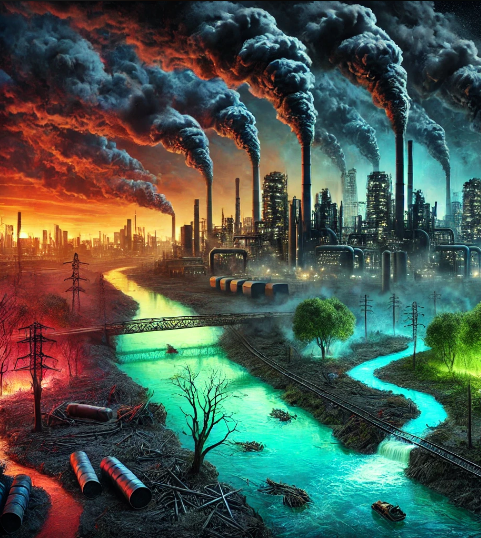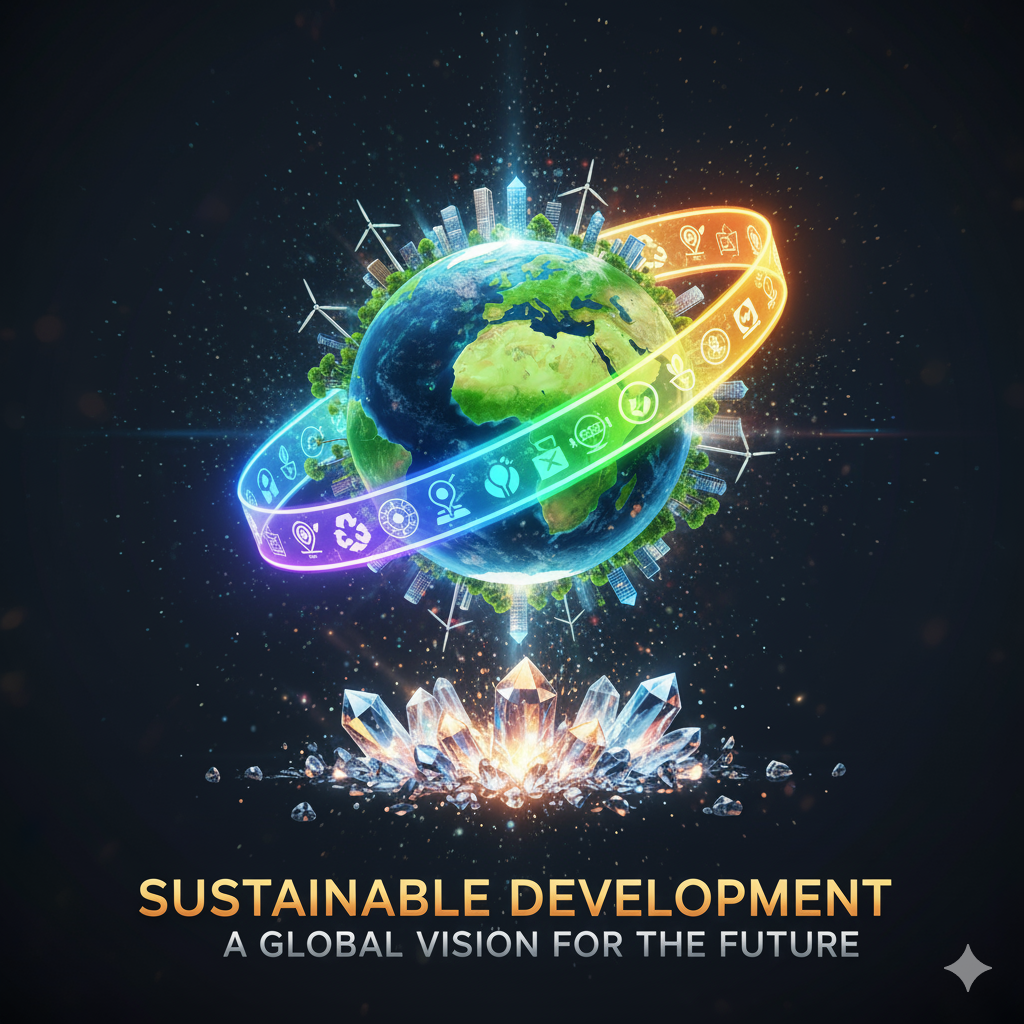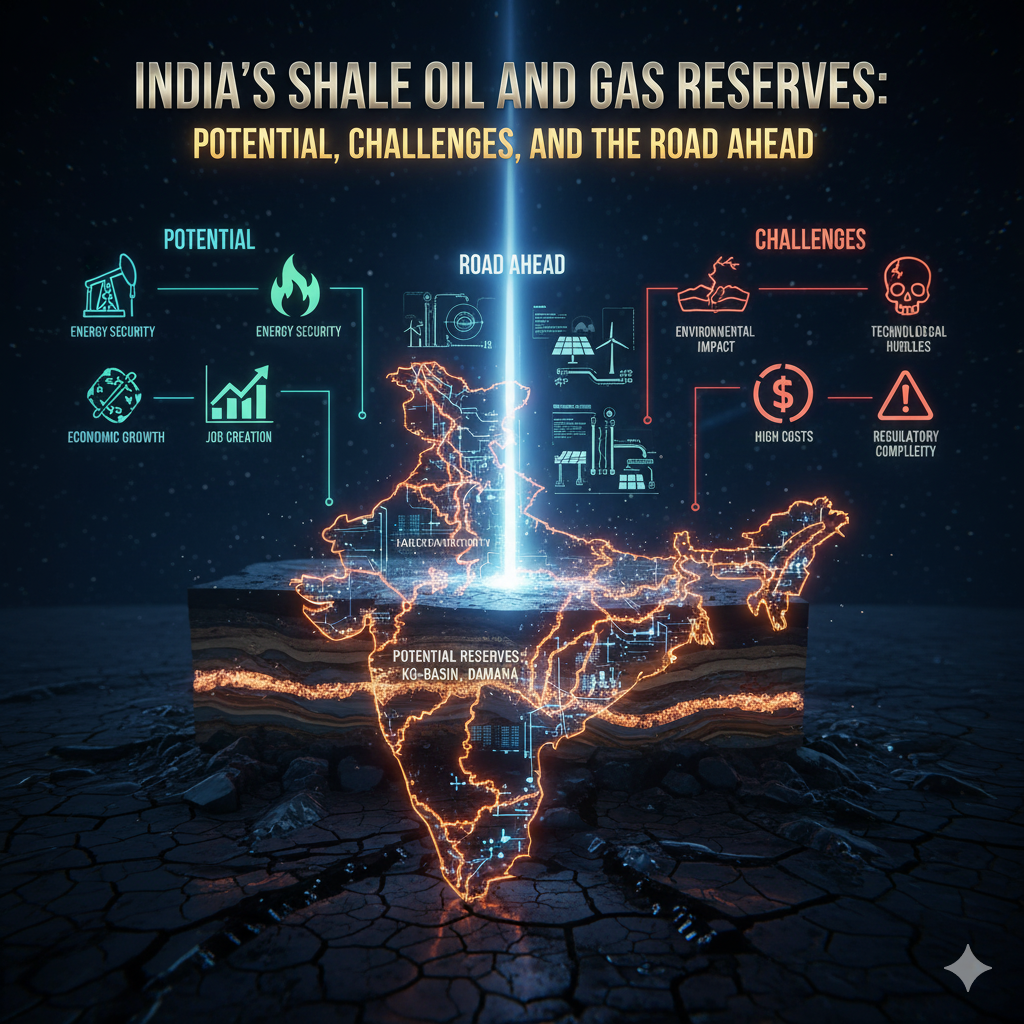Introduction
Industrialization has been a driving force behind economic growth and technological advancements worldwide. It has led to increased production, job creation, and improvements in living standards. However, when industrialization occurs without proper regulations and concern for environmental consequences—often referred to as blind industrialization—it leads to severe environmental degradation. The relentless pursuit of industrial expansion without adequate environmental safeguards results in air pollution, water contamination, deforestation, climate change, and loss of biodiversity.
This essay explores how blind industrialization contributes to environmental pollution and suggests possible measures to mitigate its impact while ensuring sustainable development.
The Link Between Industrialization and Environmental Pollution
Industrialization involves the establishment of factories, power plants, and manufacturing units, all of which require significant amounts of raw materials and energy. The excessive use of fossil fuels, deforestation for industrial expansion, and the emission of toxic waste into the environment have caused severe ecological damage. Below are some of the key ways blind industrialization pollutes the environment:
1. Air Pollution
One of the most visible and harmful effects of unchecked industrialization is air pollution. Factories and power plants burn fossil fuels such as coal, oil, and natural gas to generate energy. This process releases harmful pollutants like carbon monoxide (CO), sulfur dioxide (SO₂), nitrogen oxides (NOₓ), and particulate matter into the air.
- Health Impacts: These pollutants contribute to respiratory diseases such as asthma, bronchitis, and lung cancer. Prolonged exposure can lead to cardiovascular diseases and even premature death.
- Acid Rain: Sulfur dioxide and nitrogen oxides react with water vapor in the atmosphere, forming sulfuric and nitric acids. These acids mix with rainwater, causing acid rain, which harms soil fertility, aquatic life, and historical monuments.
- Smog and Climate Change: Industrial emissions contribute to the formation of smog, reducing visibility and causing severe respiratory problems in urban areas. Additionally, greenhouse gases like carbon dioxide (CO₂) and methane (CH₄) trap heat in the atmosphere, leading to global warming.
2. Water Pollution
Industries are one of the largest contributors to water pollution. Manufacturing plants discharge toxic chemicals, heavy metals, and untreated wastewater into rivers, lakes, and oceans, leading to serious environmental consequences.
- Contamination of Drinking Water: Industrial pollutants such as lead, mercury, and arsenic seep into groundwater, contaminating drinking water sources. Consumption of such polluted water can lead to severe health problems, including organ failure, developmental disorders, and neurological diseases.
- Marine Life Destruction: The release of chemical waste and oil spills into water bodies disrupts aquatic ecosystems. Marine animals suffer from poisoning, and coral reefs, which are crucial for marine biodiversity, are damaged.
- Eutrophication: Excessive discharge of nutrients like nitrogen and phosphorus from industrial waste promotes the overgrowth of algae in water bodies, leading to oxygen depletion. This phenomenon, known as eutrophication, suffocates fish and other aquatic species.
3. Soil Degradation and Land Pollution
Industries contribute to soil pollution through the improper disposal of hazardous waste, chemical spills, and deforestation.
- Loss of Soil Fertility: Toxic substances like heavy metals accumulate in the soil, reducing its fertility and making it unfit for agriculture. This results in decreased crop yields and food insecurity.
- Deforestation for Industrial Expansion: Forests are cleared to make way for factories, mining activities, and infrastructure development. This leads to habitat destruction, loss of biodiversity, and increased carbon dioxide levels due to reduced tree cover.
- Landfills and Industrial Waste: Industrial areas generate vast amounts of non-biodegradable waste, including plastic, metal scraps, and electronic waste. Improper disposal of such waste contaminates the land and surrounding water bodies.
4. Noise Pollution
Industries contribute significantly to noise pollution through heavy machinery, transportation of goods, and construction activities. Prolonged exposure to high noise levels can cause stress, hearing loss, sleep disturbances, and reduced productivity among workers and nearby residents.
5. Climate Change and Global Warming
Blind industrialization has accelerated global climate change. Greenhouse gas emissions from industries trap heat in the Earth’s atmosphere, leading to rising temperatures, melting glaciers, and extreme weather conditions such as hurricanes, droughts, and floods. These changes threaten food security, biodiversity, and human settlements.
Causes of Blind Industrialization
Several factors contribute to the rise of blind industrialization and its negative impact on the environment:
- Lack of Environmental Regulations: In many developing nations, weak environmental laws allow industries to operate with little regard for pollution control.
- Rapid Urbanization: Growing populations increase the demand for industrial goods and infrastructure, leading to unchecked industrial expansion.
- Profit-Driven Approach: Many industries prioritize profit over environmental sustainability, ignoring eco-friendly alternatives.
- Lack of Awareness: People and policymakers in some regions fail to recognize the long-term environmental consequences of blind industrialization.
- Dependency on Fossil Fuels: The reliance on coal and petroleum-based energy sources accelerates environmental degradation.
Solutions for Sustainable Industrialization
To mitigate the adverse effects of blind industrialization, industries, governments, and individuals must adopt sustainable practices. Below are some essential solutions:
1. Implementation of Strict Environmental Laws
Governments should enforce strict pollution control regulations, impose heavy fines on industries violating environmental norms, and encourage green industrial practices.
2. Adoption of Green Technologies
Industries should transition to cleaner energy sources like solar, wind, and hydroelectric power to reduce carbon emissions. Advanced pollution control equipment such as scrubbers, filters, and catalytic converters can minimize industrial emissions.
3. Waste Management and Recycling
Proper waste disposal, recycling of industrial byproducts, and adoption of circular economy models can significantly reduce land and water pollution.
4. Promotion of Sustainable Agriculture and Forestry
Reforestation programs and sustainable farming practices can restore degraded land and improve biodiversity. Governments and NGOs should encourage industries to engage in afforestation and conservation efforts.
5. Public Awareness and Education
Raising awareness about environmental pollution and promoting sustainable industrialization among business owners, workers, and consumers is crucial for long-term change.
6. Corporate Social Responsibility (CSR)
Industries should take responsibility for their environmental footprint and invest in eco-friendly technologies, community welfare, and environmental conservation projects.
7. Encouraging Research and Development
Investment in research and development can lead to innovative solutions that make industrial processes more efficient and less harmful to the environment.
Conclusion
While industrialization has been essential for human progress, blind industrialization has become a major threat to the environment. The unchecked expansion of industries leads to air and water pollution, deforestation, climate change, and biodiversity loss. However, with the right policies, technologies, and collective efforts, it is possible to achieve sustainable industrialization. Governments, industries, and individuals must work together to balance economic growth with environmental preservation to ensure a healthier and more sustainable future for future generations.
Environmental sustainability should be at the core of industrial policies, and industries must be held accountable for their ecological impact. By adopting green technologies, enforcing strict regulations, and promoting environmental awareness, we can pave the way for a cleaner and more sustainable world.




